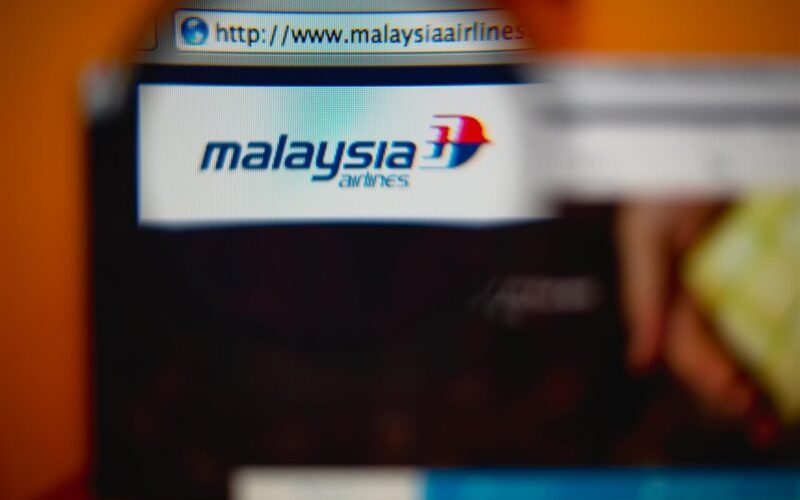Malaysia’s sovereign wealth fund has hired Morgan Stanley to explore strategic options for Malaysia Airlines, including a potential stake sale, as part of a recovery plan for the country’s struggling flag carrier. The move is the latest in a scramble to turn around the loss-making airline as speculation on potential buyers and conflicting views regarding how the carrier’s woes should be dealt with continue.
In an address to the Malaysian parliament on July 24, 2019, Deputy Minister Mohamed Farid Md Rafiq confirmed that the sovereign wealth fund of the government, Khazanah Nasional, has brought in global investment bank Morgan Stanley as an independent advisor in Malaysia Airlines recovery efforts.
The bank will assess possible options for the carrier’s future, including privatization. Khazanah is reportedly looking to finalize a deal by the end of the year, although the timeline is subject to change, Bloomberg writes citing people familiar with the matter.
“Khazanah is working with Malaysia Airlines Group Berhard to reassess its strategy and evaluate all strategic options, including proposals from external parties, to steer the company towards financial sustainability,” a spokesperson for the fund was quoted as saying by the Financial Times. “The role of any external advisory… would be to independently review and assess those proposals.”
According to Prime Minister Mahathir Mohamad, who has spoken out on the issue many times to Malaysian press, “all options” are on the table. “We have changed the management of the airline many times. Everyone promises that they can turn around the company, but in the end they all failed”.
“This time around, we don’t want to give [control of the airline] without really studying the capabilities of the people who may want to take over the airline,” the premier was quoted as saying by The Edge Markets on July 11, 2019. Mahathir also added that there was no time limit for the government to make a decision on the national carrier’s future.
Sell, refinance or shut down?
Since the Prime Minister initiated a review of options for the revival of the struggling Malaysia Airlines earlier in 2019, the possibility of another restructuring plan, an injection of funds, a potential sale and even a shutdown of the airline altogether have all been floating around, with many prominent Malaysian observers calling for the government not to close the national carrier and speaking out against another cash injection.
By July 2019, the prospect of saving the airline with the help of a strategic partner seemed to have solidified, however, on the condition that Malaysian Airlines retains its identity as the national carrier. Mahathir has also stressed that the state would be willing to give up its “majority” stake in the carrier, as long as it “has a say” in how it is run.
“The government does not want to be bailing out Malaysia Airlines so many times. But, at the same time, the government wants to have a say. So, we may not have a majority share, but we have to preserve some government role,” the Prime Minister told reporters as quoted by The Edge Markets. The option for the state to reduce its shareholding to a “minority” stake has also been reiterated by the Deputy Minister.
Keeping up with Malaysia Airlines
On July 9, 2019, Mahathir confirmed the government had received and was studying four proposals, many from Malaysian companies, not named by the Premier, which had offered to either buy a stake in the flag carrier or manage it, Bloomberg reported at the time. Among the potential investors – a consortium led by a former Chairman of AirAsia Group, Datuk Pahamin Rajab.
The ex-AirAsia Group Chairman’s meeting with the Prime Minister early in July, widely reported by local news media, sparked speculation the budget carrier could be taking over Malaysia Airlines. AirAsia founder Tony Fernandes later refuted the claims, saying his airline had no involvement with the national carrier.
Other speculation surrounding potential suitors pointed to Singapore Airlines (SIA1) (SINGY) , after Malaysia Airlines inked a Memorandum of Understanding (MoU) with the carrier late in June 2019, on a strategic tie-up aimed at, among other enhancements, building on the two airlines’ existing codeshare agreement for flights between Malaysia and Singapore. The flag carrier of Singapore, however, has so far shown no interest in making an investment.
On the lookout for new partners
Meanwhile, as the prospect of a sale remains hazy, Malaysia Airlines continues to look for ways to bring in revenue and remain competitive in delivering a full-service product, including by venturing into new partnerships.
Recently, on July 24, 2019, the flag carrier announced it is launching a new travel marketplace called MHholidays in partnership with tourism giant TUI Group. The platform allows customers to book accommodation, as well as holiday packages combining a flight and a stay. In the future, Malaysia Airlines expects the platform to expand beyond flights and hotels to include ground transfers and tours.
And on July 27, news emerged of another partnership – a three-month agreement with Turkey’s Dorak Holdings to provide charter services between Kuala Lumpur, the capital of Malaysia, and Istanbul, capital of Turkey, from October until December 2019. According to the agreement, Malaysia Airlines will operate three times weekly flights utilizing its Airbus A330 aircraft.
The national carrier has had a turbulent recent history involving years of mismanagement and billions in losses, despite the government’s many efforts to revive the flag carrier. The company also took a major hit from two tragedies – the crash of MH17 on July 17, 2014, over eastern Ukraine, and the mystery of MH370, the flight that disappeared on March 8, 2014, en route from Kuala Lumpur to Beijing.
After Malaysia Airlines was nationalized in 2014, Khazanah, the sole shareholder of the flag carrier, initiated a restructuring process, pouring $1.5 billion (6 billion ringgit) into the company. The recovery plan also saw the laying off of 6,000 staff. Since then, the airline has been scaling-down its network and now employs a workforce of only 7,159.

